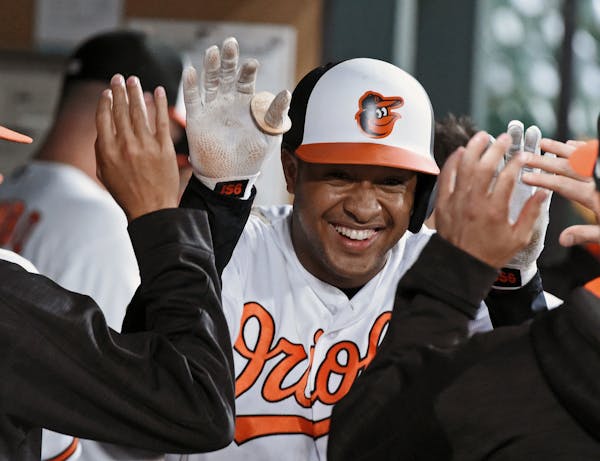When Joe Mauer retired last month, the Twins lost 15 years worth of big-league experience and an unflappable clubhouse presence. But Mauer was only the most conspicuous example of a winnowing process that began long before he walked away from the game.
The Twins have gotten younger over the past few months, a process that occurs annually to every team, but rarely to this extent. None of the 13 oldest players to wear a Twins uniform in 2018 is on the team's 40-man roster today, a group of exiles that ranges from 41-year-old Fernando Rodney to 31-year-old Lance Lynn, with familiar faces such as Brian Dozier, Eduardo Escobar and Ervin Santana in between.
And those are hardly the only veterans excised from the team. A total of 27 players born in the 1980s (or earlier) appeared in a Twins game last season. Only six remain.
The oldest current Twin? It's Jason Castro, who turned 31 in mid-June, a month after undergoing season-ending knee surgery. Each of the other 29 MLB teams have at least two players older than Castro on their rosters.
There's nothing wrong with weeding out the old guys, of course. It's a natural evolution of every team's roster, since most players reach their peak of productivity in their mid- to late 20s. So the Twins, now all but bereft of past-their-prime players, are well-positioned to ride the projected improvement of young players to progress as a team — if they can find the right young players.
But there's a case to be made for replacing some of that lost experience. In this era of three-places-past-the-decimal-point baseball analysis, it's difficult to attach a value to clubhouse leadership, to having a veteran presence around all the youngsters — but it's not zero.
Players whose contributions might seem limited on paper can still help the team by setting a tone that creates comradeship and professionalism off the field, and by offering advice and support to players who are still learning how to succeed at the highest level. They keep the clubhouse from evolving into just 25 guys sitting at their lockers, staring at their phones, and as General Manager Thad Levine put it last summer, they can help prevent three-game losing streaks from turning into eight-game skids.
That's part of the reason why the Twins signed Chris Gimenez as the backup catcher and Matt Belisle as a reliever in 2017, and why both reappeared in the Twins' clubhouse during the 2018 season.
"What we had heard anecdotally about those guys was the value they bring to the team when they're not playing, and the value they bring when things aren't going 100 percent right for the club," Levine said at a fan gathering in August. "We thought those were very important pieces to invest in around the team, something that was purposeful on our part and something that we'll continue to do."
Veterans such as outfielder Adam Jones or reliever Joakim Soria, for instance, have sterling clubhouse reputations and might be potential fits for such roles.
"We are always factoring in ways to add leadership and experience to our clubhouse, and we'll definitely prioritize it as we go along," Chief Baseball Officer Derek Falvey said. But, he added, the Twins' front office believes the team has a number of players who, though still young, might be ready to fill that void themselves.
"They are starting to get to a point where they need to take on leadership responsibilities. We have some guys who are poised, in my mind," Falvey said, without being specific. "They have leadership capabilities to take that one, and we need to give them that opportunity."
Ex-Piston Will Bynum sentenced to 18 months in prison in NBA insurance fraud scheme
Neal: Future can't come fast enough for Wild
Whitey Herzog, Hall of Fame manager who led St. Louis Cardinals to 3 pennants, dies at 92
Countdown clock for Paris Olympics hits 100-day mark on same day Olympic Torch is lit

